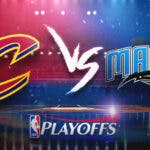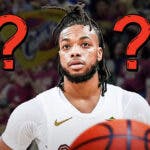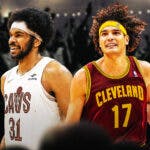Today's NBA is ruled by long, switchy wings. LeBron James has the association on a string, Kevin Durant is fresh off back-to-back Finals MVPs, and teams are lining up for Kawhi Leonard's services. Absent assets or allure to obtain an elite wing, the Orlando Magic are seeking their own path to success.
Orlando has long been purgatory for high-level prospects, failing to unlock Tobias Harris or Victor Oladipo's potential only to see them flourish elsewhere. So, it is slightly perplexing to see the Magic select such raw prospects in 6-foot-10 Jonathan Isaac and 7-foot-1 Mo Bamba with the sixth overall pick in back-to-back drafts.

Every team wants a Jaylen Brown-type wing, but they're not always an option. Teams deficient in everything need to be flexible enough to find the best talent available and let that guide their direction.
Aside from Luka Doncic, the league went heavy on big men early in this year's draft, drafting best available talents over a wing crop better suited for the mid-lottery and below. Consider last night's draft and the players who immediately followed Bamba at sixth overall: Wendell Carter Jr., Collin Sexton, and Kevin Knox.
Carter Jr., while a superior offensive talent, doesn't project to be a more nimble big on the perimeter than Bamba, making him a tough stylistic fit in Orlando. He also lacks the same upside by most accounts.
Sexton is a point guard whose size limits him to guarding other point guards, leaving him to be mercilessly targeted on switches; while his outside shot leaves questions over whether offensive impact will be enough to make up for it.
Knox fits the profile of a modern NBA wing, but the ninth pick seemed to be about his ceiling as a prospect with concerns about his athleticism, lateral quickness, and defense.
Between Lauri Markannen, Frank Ntilikina, and Dennis Smith Jr., none of the prospects in Orlando's draft range last season fit modern archetype building blocks either. So, the team bet on Jonathan Isaac's high-ceiling blend of mobility, rim protection, and outside shooting.

At his peak, Mo Bamba has the tools to be a game-altering force in the middle — a la Rudy Gobert — with better switch-ability and an outside shot, all perfect characteristics in today's NBA. Isaac is cut from a similar cloth (though already has more mobility and better fluidity as a ball-handler/creator with less rim-protecting prowess) and, despite battling injuries most of his rookie season, shot 34.8 percent beyond the arc while registering a combined 4.2 steals per-36 minutes. And, bear with me here as I cite the ultra-flawed Defensive Box Plus-Minus, had a DBPM of 3.1, which would have been tied with Russell Westbrook (case and point why it's flawed!) for eighth in the league had he been eligible.
Both Bamba and Isaac have steep development curves ahead of them to reach their monstrous ceilings. Adding weight, especially for Isaac, who needs to prove his slender, wiry frame can withstand the rigors of an 82-game season (he played in just 27 contests as a rookie), is a priority. Bamba was a strong rebounder in college, but might be bullied off his spots at the next level.
And even with overhauled shooting mechanics, Bamba's jumper remains a theoretical asset as he shot just 27.5 percent from three at Texas. Isaac's cheery mark of 34.8 percent came on just 46 attempts. Feeding them consistent minutes, letting them experience growing pains — on both ends of the floor — and explore the depth of their games is the optimal path for success.

For now, the philosophy seems to be answering the league's wing revolution with longer, mobile switch-everything bigs who also have the potential to be deep threats; reviving traditional front courts with modern tendencies.
These two tantalizing bigs have time to develop, assuming Nikola Vucevic and Bismack Biyombo aren't given minutes ahead of them with a priority on winning. A fully actualized Bamba and Isaac still won't be enough to push the Magic all that far. They fill a sizable number of gaps, but many would remain left unclogged.
But realized versions of each provide of the advantages that come with size without the same liabilities. New head coach, Steve Clifford, is a defensive guru who has the chance to unlock Bamba and Isaac's immense talent on that end, which could be the league's stingiest frontcourt tandem, primed to thrive against even the most wing-heavy lineups.
In time, the Magic will need to add a shot-creating, playmaking wing with defensive versatility. Neither Bamba nor Isaac has much offensive polish and will need adept floor generals flanking them — no, Shelvin Mack (even with his team-high 3.9 assists per game) and Evan Fournier won't cut it — to make life easier offensively. They'll also need to figure out where Aaron Gordon, who is best suited to playing the power forward, fits in next to them. But both should flank that star perfectly if and when the Magic find one.
Behind Jaren Jackson Jr. and perhaps Marvin Bagley III, whose defensive technique needs serious refinement, Bamba is going to be the most capable big from the top seven of defending on the perimeter. Pair him with another long, springy, (potential) floor-spacing big in Isaac and Orlando might be creating a new archetype of its own.




